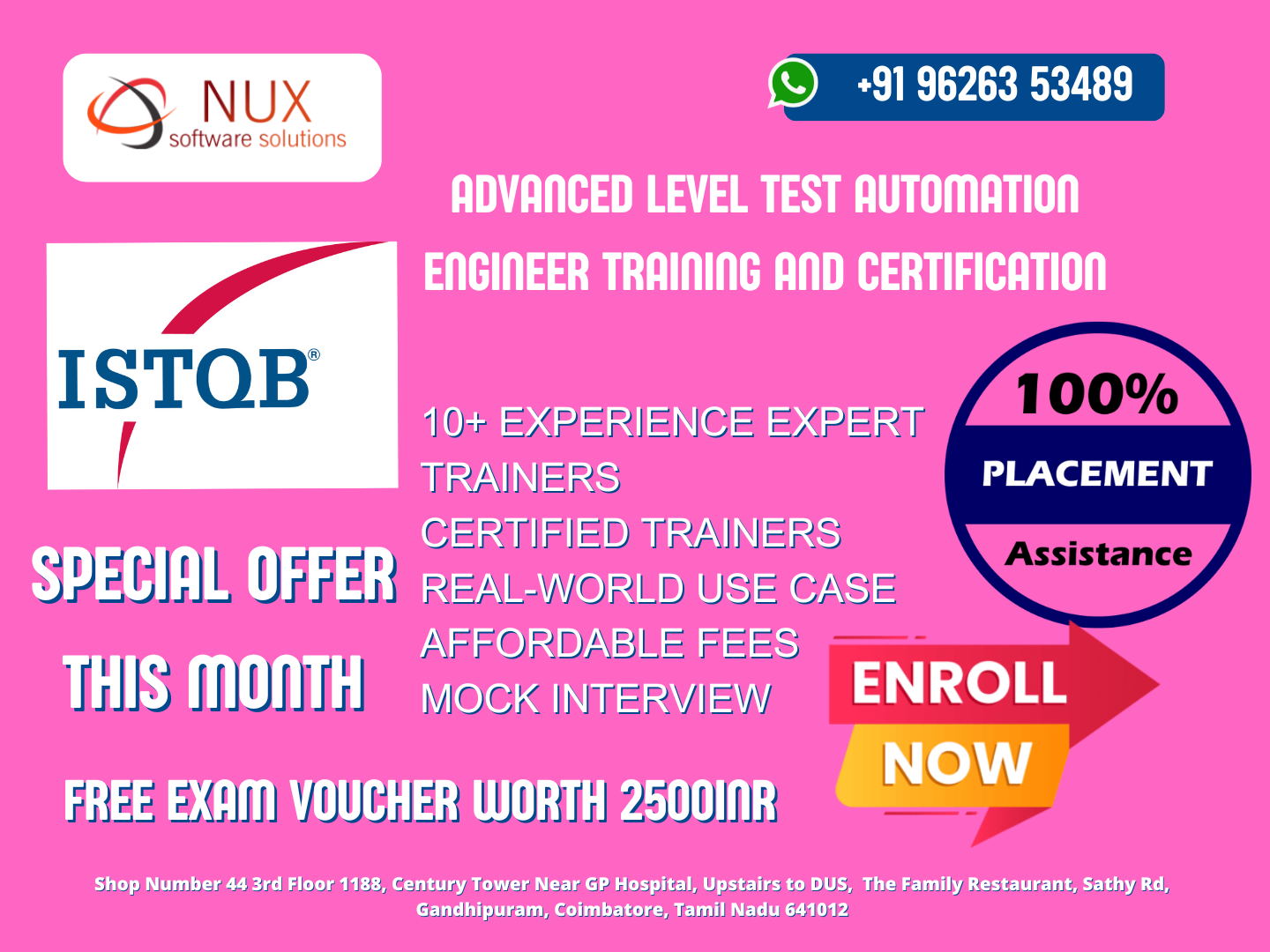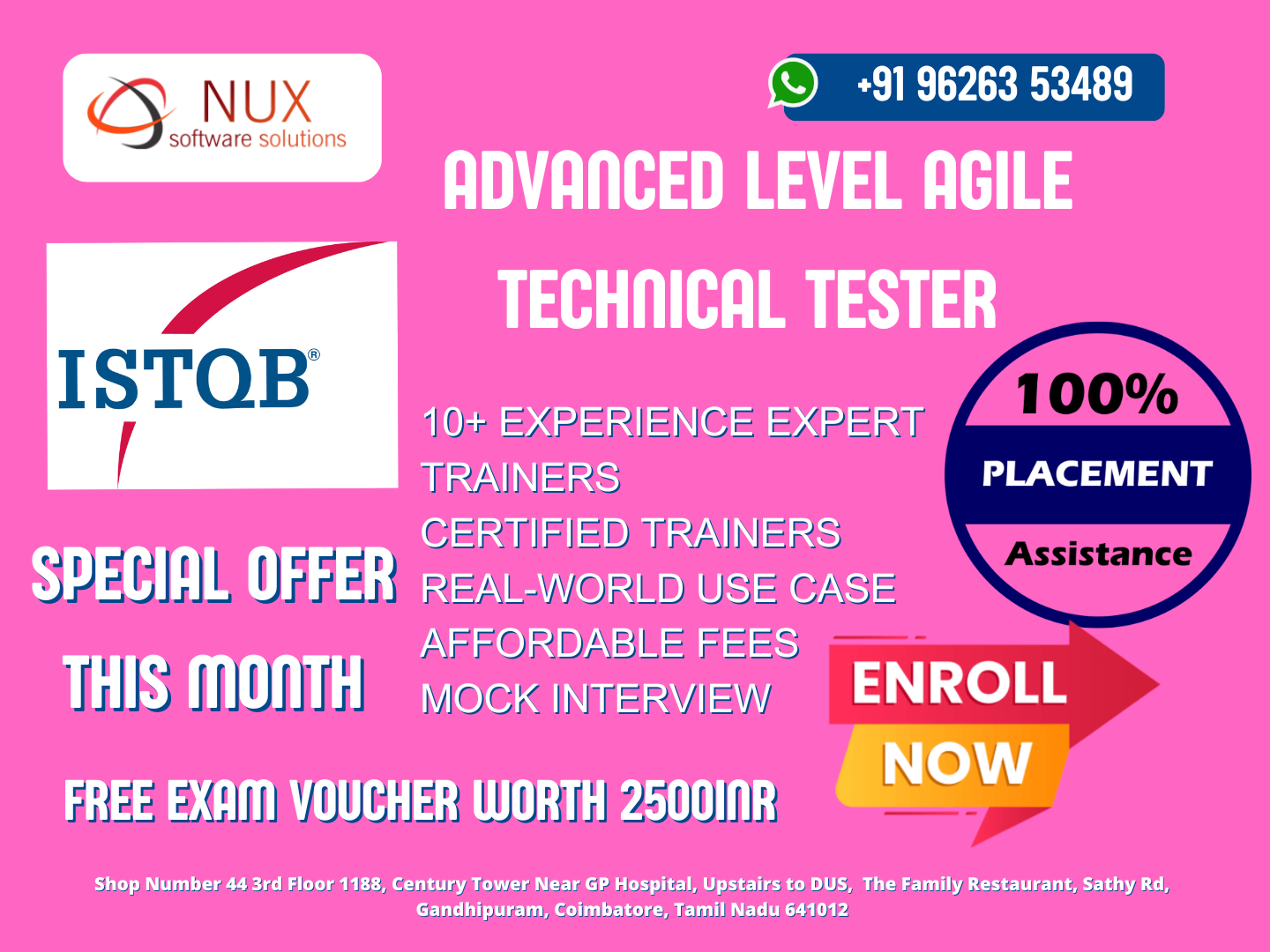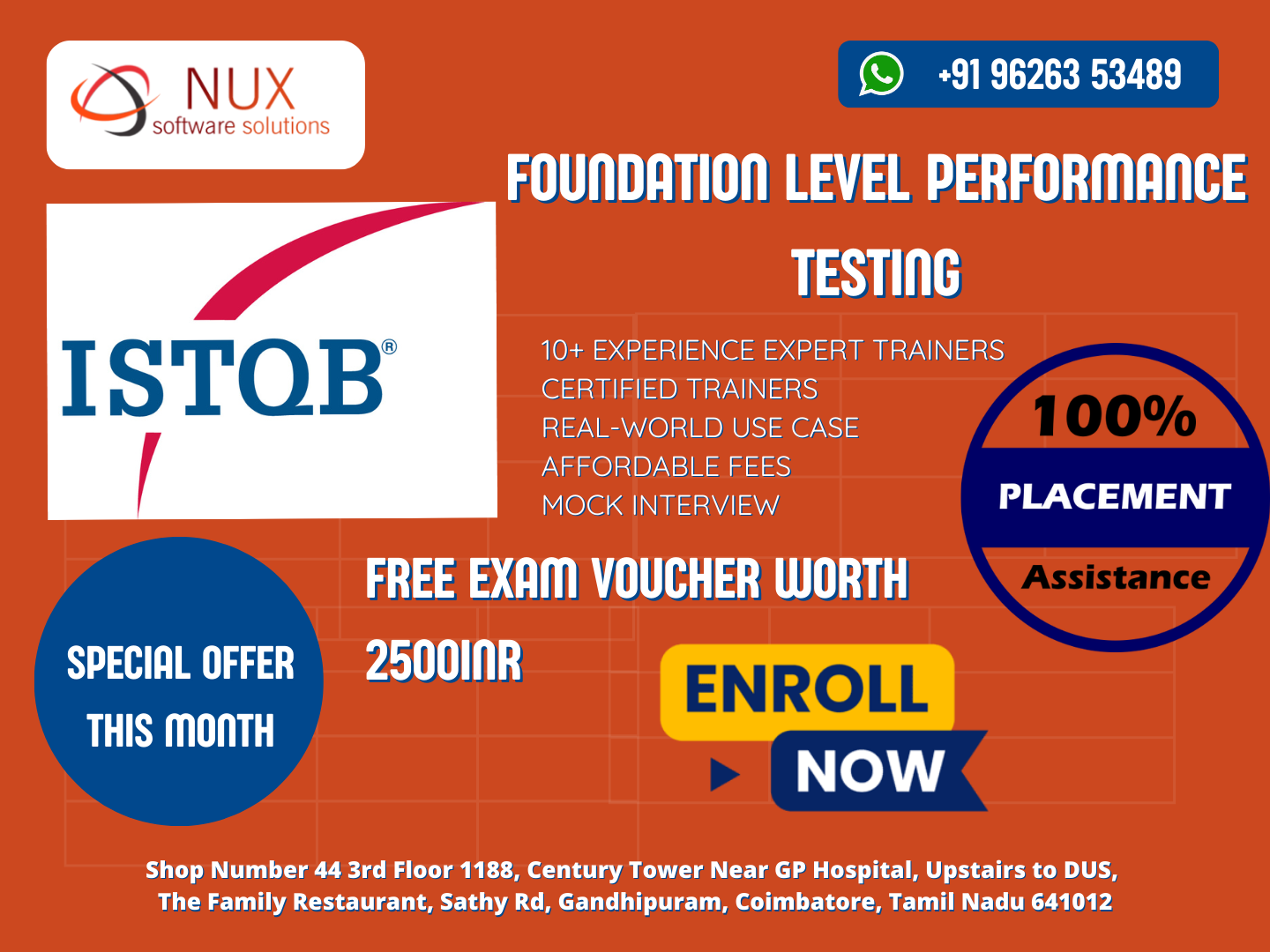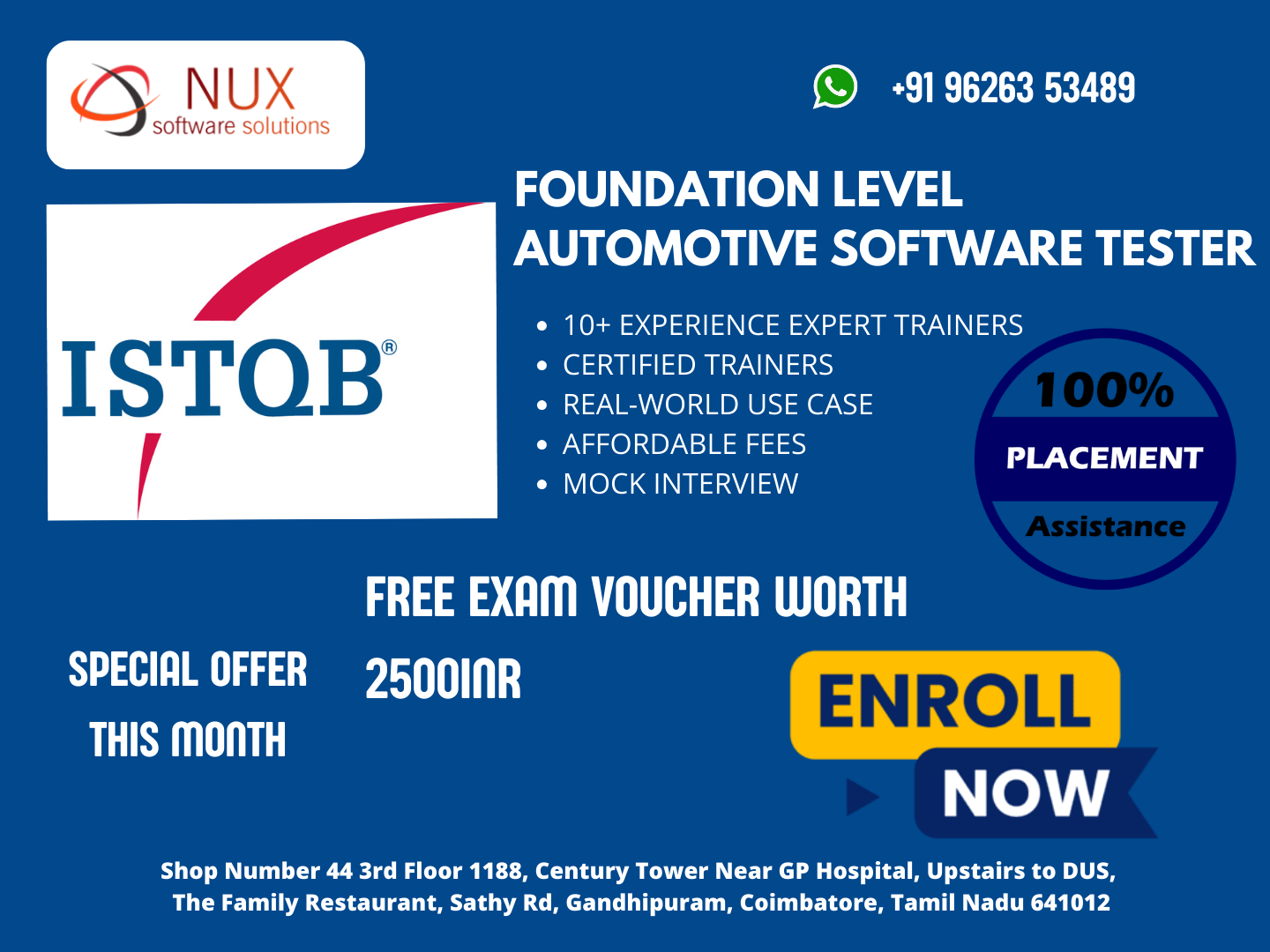Advanced Level Test Automation Engineer Training and Certification


Best Advanced level test Automation Engineer Certification training courses classes deliver by Nux software solutions in coimbatore. Nux software solutions in coimbatore has excellent and advanced training programs that will give you better performance & hands on experience. Our industry’s expert trainers offer a wide range of skills and experience in their graded areas. The Training center environment is too good for professional, individual, corporate, live project training and industrial training. Labs infrastructure is advanced, well managed and you can access LAB 24X7 from anywhere. Training center has international expert trainers and they have excellent knowledge, real time industry experience. Our Training programs combine with several innovative learning methods and delivery models. We understand your requirement and it will give you 100 percent growth for your career and provide the cost effective training programs and also work with flexibility for the trainees.
This Foundation level usability testing course is designed to teach participants the essentials of usability and how to effectively evaluate usability, user experience and accessibility. You will learn how to plan and prepare for usability testing and select the most appropriate testing location and participants. After understanding the application of usability reviews, testing and surveys you will be able to propose the most effective usability testing approach.
Testers, test analysts, test engineers, test consultants, test managers, user acceptance testers, and software developers working on usability issues will find this course useful, informative, and fun. We suggest that attendees hold the ISTQB Foundation Level certificate, especially if they intend to take the ISTQB Usability Tester exam, but non-certificate holders can benefit from the course.
Course Syllabus
Module
Introduction to this Syllabus
0.1 Purpose of this Document
0.2 Scope of this Document
0.2.1 In Scope
0.2.2 Out of Scope
0.3 The Certified Tester Advanced Level Test Automation Engineer
0.3.1 Expectations
0.3.2 Entry and Renewal
0.3.3 Level of Knowledge
0.3.4 Examination
0.3.5 Accreditation
0.4 Normative versus Informative Parts
0.5 Level of Detail
0.6 How this Syllabus is Organized
0.7 Terms, Definitions and Acronyms
1.0 Introduction and Objectives for Test Automation
1.1 Purpose of Test Automation
1.2 Success Factors in Test Automation
2.0 Preparing for Test Automation
2.1 SUT Factors Influencing Test Automation
2.2 Tool Evaluation and Selection
2.3 Design for Testability and Automation
3.0 The Generic Test Automation Architecture
3.1 Introduction to gTAA
3.1.1 Overview of the gTAA
3.1.2 Test Generation Layer
3.1.3 Test Definition Layer
3.1.4 Test Execution Layer
3.1.5 Test Adaptation Layer
3.1.6 Configuration Management of a TAS
3.1.7 Project Management of a TAS
3.1.8 TAS Support for Test Management
3.2 TAA Design
3.2.1 Introduction to TAA Design
3.2.2 Approaches for Automating Test Cases
3.2.3 Technical considerations of the SUT
3.2.4 Considerations for Development/QA Processes
3.3 TAS Development
3.3.1 Introduction to TAS Development
3.3.2 Compatibility between the TAS and the SUT
3.3.3 Synchronization between TAS and SUT
3.3.4 Building Reuse into the TAS
3.3.5 Support for a Variety of Target Systems
4.0 Deployment Risks and Contingencies
4.1 Selection of Test Automation Approach and Planning of Deployment/Rollout
4.1.1 Pilot Project
4.1.2 Deployment
4.1.3 Deployment of the TAS Within the Software Lifecycle
4.2 Risk Assessment and Mitigation Strategies
4.3 Test Automation Maintenance
4.3.1 Types of Maintenance
4.3.2 Scope and Approach
5.0 Test Automation Reporting and Metrics
5.1 Selection of TAS Metrics
5.2 Implementation of Measurement
5.3 Logging of the TAS and the SUT
5.4 Test Automation Reporting
6.0 Transitioning Manual Testing to an Automated Environment
6.1 Criteria for Automation
6.2 Identify Steps Needed to Implement Automation within Regression Testing
6.3 Factors to Consider when Implementing Automation within New Feature Testing
6.4 Factors to Consider when Implementing Automation of Confirmation Testing
7.0 Verifying the TAS
7.1 Verifying Automated Test Environment Components
7.2 Verifying the Automated Test Suite
8.0 Continuous Improvement
8.1 Options for Improving Test Automation
8.2 Planning the Implementation of Test Automation Improvement



